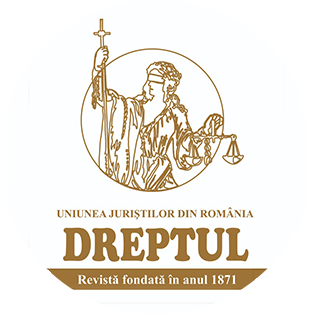-

-
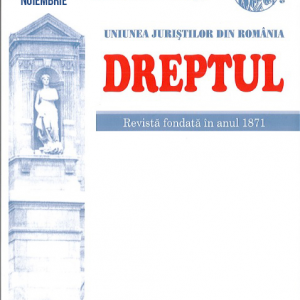 Examining art. 201 of Law No. 71/2011 for the implementation of the new Civil Code (Law No. 287/2009, republished on July 15, 2011) in conjunction with art. 6 paragraph (4) of the said Code, the author concludes that judicial bodies (judiciary authorities and arbitration courts) can, ex officio and at any stage of the trail, claim the limitation periods that have begun under the former regulation (Article 18 of Decree No. 167/1958) as well, regardless of whether such limitation periods have been met or not until the entry into force of the new Civil Code; subsequently, only the limitation periods which have begun after October 1st, 2011 (the date of entry into force of the new Civil Code) shall be able to be claimed exclusively by the interested party and only until the first term the parties were duly summoned at (this according to art. 2513 of the new Civil Code).
Examining art. 201 of Law No. 71/2011 for the implementation of the new Civil Code (Law No. 287/2009, republished on July 15, 2011) in conjunction with art. 6 paragraph (4) of the said Code, the author concludes that judicial bodies (judiciary authorities and arbitration courts) can, ex officio and at any stage of the trail, claim the limitation periods that have begun under the former regulation (Article 18 of Decree No. 167/1958) as well, regardless of whether such limitation periods have been met or not until the entry into force of the new Civil Code; subsequently, only the limitation periods which have begun after October 1st, 2011 (the date of entry into force of the new Civil Code) shall be able to be claimed exclusively by the interested party and only until the first term the parties were duly summoned at (this according to art. 2513 of the new Civil Code). -
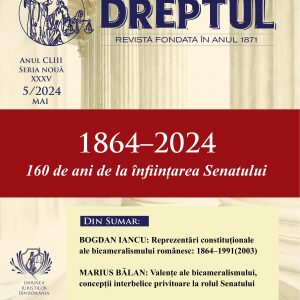
-
 On 2 November 2020, it was published in the Official Journal of Romania, Part I, No 1019, the Law No 228/2020 for the amendment and completion of some normative acts in the criminal field in order to transpose some directives of the European Union (hereinafter, the Law No 228/2020), an act that modifies and completes both Law No 286/2009 regarding the Criminal Code and Law No 135/2010 on the Code of Criminal Procedure. Among the changes made by the legislator in the Criminal Code is the introduction of the extended confiscation in the case of third parties (which I will generically call „third party acquirers”) so that, taking into account this newly introduced hypothesis, this study aims, in a first stage, to address the issue, starting from the evolution of the institution of extended confiscation from the perspective of the european and national legislative framework, then continuing with a brief analysis of the changes made by Law No 228/2020. Finally, the article examines the possibility of ordering the extended confiscation security measure in the case of third parties in relation to the relevant doctrine and jurisprudence in this matter. In a second stage, the present study aims to examine from a procedural perspective the guarantees imposed by Directive (EU) 2014/42 and which the Romanian legislator, in order to respect the right to a fair trial, provides to the third party acquirer during the criminal proceedings, with a closer look at the existence of an effective remedy for the decisions of the courts of appeal which order for the first time the measure of extended confiscation. Also, this part analyzes the possible quality that the acquiring third party has during the criminal process. Finally, before drawing conclusions on those analyzed, it will also be shown how the other Member States have provided/transposed into their national legislation the particular hypothesis of extended confiscation in the case of third parties.
On 2 November 2020, it was published in the Official Journal of Romania, Part I, No 1019, the Law No 228/2020 for the amendment and completion of some normative acts in the criminal field in order to transpose some directives of the European Union (hereinafter, the Law No 228/2020), an act that modifies and completes both Law No 286/2009 regarding the Criminal Code and Law No 135/2010 on the Code of Criminal Procedure. Among the changes made by the legislator in the Criminal Code is the introduction of the extended confiscation in the case of third parties (which I will generically call „third party acquirers”) so that, taking into account this newly introduced hypothesis, this study aims, in a first stage, to address the issue, starting from the evolution of the institution of extended confiscation from the perspective of the european and national legislative framework, then continuing with a brief analysis of the changes made by Law No 228/2020. Finally, the article examines the possibility of ordering the extended confiscation security measure in the case of third parties in relation to the relevant doctrine and jurisprudence in this matter. In a second stage, the present study aims to examine from a procedural perspective the guarantees imposed by Directive (EU) 2014/42 and which the Romanian legislator, in order to respect the right to a fair trial, provides to the third party acquirer during the criminal proceedings, with a closer look at the existence of an effective remedy for the decisions of the courts of appeal which order for the first time the measure of extended confiscation. Also, this part analyzes the possible quality that the acquiring third party has during the criminal process. Finally, before drawing conclusions on those analyzed, it will also be shown how the other Member States have provided/transposed into their national legislation the particular hypothesis of extended confiscation in the case of third parties. -
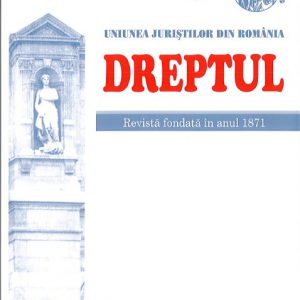 Recursul în casație este inadmisibil dacă cererea formulată nu conține mențiunile privitoare la hotărârea judecătorească atacată și la cazul de casare invocat. Absența celor două mențiuni influențează negativ inclusiv îndeplinirea celorlalte condiții de admisibilitate a recursului în casație. În primul rând, atât timp cât nu se menționează o hotărâre judecătorească anume, nu poate fi verificată condiția de admisibilitate referitoare la obiectul recursului în casație și nu se poate răspunde la întrebarea dacă recursul în casație s-a formulat de către o persoană ce are calitatea de parte în sens procesual. În al doilea rând, inexistența vreunei mențiuni privitoare la hotărârea judecătorească atacată constituie un impediment în calea determinării momentului de la care termenul de recurs în casație a început și a celui la care s-a împlinit. În al treilea rând, lipsa mențiunii privitoare la cazul de casare invocat face să lipsească și motivarea incidenței vreunui asemenea caz în speță.
Recursul în casație este inadmisibil dacă cererea formulată nu conține mențiunile privitoare la hotărârea judecătorească atacată și la cazul de casare invocat. Absența celor două mențiuni influențează negativ inclusiv îndeplinirea celorlalte condiții de admisibilitate a recursului în casație. În primul rând, atât timp cât nu se menționează o hotărâre judecătorească anume, nu poate fi verificată condiția de admisibilitate referitoare la obiectul recursului în casație și nu se poate răspunde la întrebarea dacă recursul în casație s-a formulat de către o persoană ce are calitatea de parte în sens procesual. În al doilea rând, inexistența vreunei mențiuni privitoare la hotărârea judecătorească atacată constituie un impediment în calea determinării momentului de la care termenul de recurs în casație a început și a celui la care s-a împlinit. În al treilea rând, lipsa mențiunii privitoare la cazul de casare invocat face să lipsească și motivarea incidenței vreunui asemenea caz în speță. -
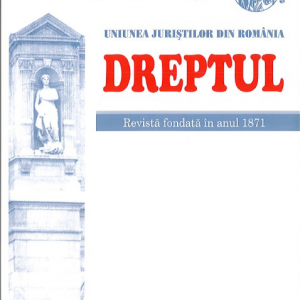 The information about the patient’s state of health, diagnosis, treatment, personal data is confidential even after his death. There is an obligation of the physician to keep the professional secrecy, which is opposable to the patient’s family members and which is maintained even after the person has ceased to be his patient or is deceased. The present study discusses aspects on the impossibility of proving a possible malpractice case, in the absence of the access of the patient’s family to medical documents, medical observations, medical sheets, and medical treatment applied to the patient deceased in the meantime. We have in view that Article 21 of the Law No 46/2003 on patient’s rights stipulates that all information regarding the patient’s condition, the results of the investigations, the diagnosis, the prognosis, the treatment, the personal data are confidential even after his death, and Article 22 of the same normative act provides that confidential information may be provided only if the patient gives his explicit consent or if the law expressly requires so. Similarly, Article 18 of the Code of Professional Deontology states that the physician’s obligation to keep professional secrecy is also opposableagainst the members of the family of that person concerned and such an obligation to preserve the professional secrecy persists also after the person in question ceased to be a his patient or deceased. Starting from these provisions, it is raised the question of the impossibility to prove a possible malpractice case, in the absence of the access of the patient’s family to medical documents, observation sheets and post-surgery treatment of the patient who deceased in the meantime.
The information about the patient’s state of health, diagnosis, treatment, personal data is confidential even after his death. There is an obligation of the physician to keep the professional secrecy, which is opposable to the patient’s family members and which is maintained even after the person has ceased to be his patient or is deceased. The present study discusses aspects on the impossibility of proving a possible malpractice case, in the absence of the access of the patient’s family to medical documents, medical observations, medical sheets, and medical treatment applied to the patient deceased in the meantime. We have in view that Article 21 of the Law No 46/2003 on patient’s rights stipulates that all information regarding the patient’s condition, the results of the investigations, the diagnosis, the prognosis, the treatment, the personal data are confidential even after his death, and Article 22 of the same normative act provides that confidential information may be provided only if the patient gives his explicit consent or if the law expressly requires so. Similarly, Article 18 of the Code of Professional Deontology states that the physician’s obligation to keep professional secrecy is also opposableagainst the members of the family of that person concerned and such an obligation to preserve the professional secrecy persists also after the person in question ceased to be a his patient or deceased. Starting from these provisions, it is raised the question of the impossibility to prove a possible malpractice case, in the absence of the access of the patient’s family to medical documents, observation sheets and post-surgery treatment of the patient who deceased in the meantime. -
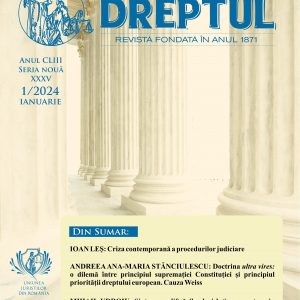
-
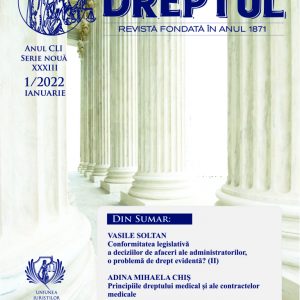 Family relationships are an area of great interest due to its intimacy and sensitivity. Because of the unpredictability of modern life, many families are falling apart. Thus, the issue of dissolution of marriage, whether through divorce or separation, is of paramount importance for modern society. Both the European Union and some Member States, especially the predominantly Catholic ones, have adapted to religious realities and regulated spouses’ separation through secular laws. The purpose of this article is to reveal that the Romanian law has the institution of spouses’ separation which produces, however, only effects of canon law, and not of civil law. The methods used in support of our thesis are analysis and synthesis. In Romania, the state recognized the Canonical Codes of the Roman-Catholic and Oriental Churches that provide for separation. But it denies any civil, secular effects of the institution. It is high time for the Romanian legislator to regulate the institution of spouses’ separation whether by altering the Civil Code or through a concordat between the state and the Holy See. The secular effects of spouses’ separation will protect the religious freedom of the Catholic people and the traditions of the Roman Catholic denomination. Moreover, introducing legal separation in the Romanian law will ensure a better application of the private international law of the European Union which provides for the international jurisdiction and for the law applicable to such separation.
Family relationships are an area of great interest due to its intimacy and sensitivity. Because of the unpredictability of modern life, many families are falling apart. Thus, the issue of dissolution of marriage, whether through divorce or separation, is of paramount importance for modern society. Both the European Union and some Member States, especially the predominantly Catholic ones, have adapted to religious realities and regulated spouses’ separation through secular laws. The purpose of this article is to reveal that the Romanian law has the institution of spouses’ separation which produces, however, only effects of canon law, and not of civil law. The methods used in support of our thesis are analysis and synthesis. In Romania, the state recognized the Canonical Codes of the Roman-Catholic and Oriental Churches that provide for separation. But it denies any civil, secular effects of the institution. It is high time for the Romanian legislator to regulate the institution of spouses’ separation whether by altering the Civil Code or through a concordat between the state and the Holy See. The secular effects of spouses’ separation will protect the religious freedom of the Catholic people and the traditions of the Roman Catholic denomination. Moreover, introducing legal separation in the Romanian law will ensure a better application of the private international law of the European Union which provides for the international jurisdiction and for the law applicable to such separation. -
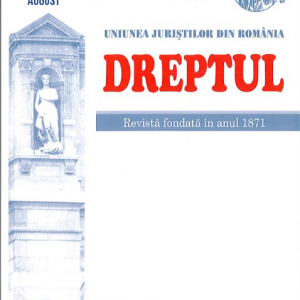 The international treaties on human rights are the fundamental conventional sources de jure applicable in this area and at the level of the European Union. The evolution of their content relevant to the fundamental rights is spectacular, starting from the lack of interest in terms of regulations expressed in the Treaty of Rome signed in 1957, to the rules of reference to the (European) Convention for the protection of human rights and fundamental freedoms contained in the Single European Act or the Treaty of Maastricht and up to the establishment of the European Union’s own protection mechanism under the Treaty of Lisbon and the Charter of fundamental rights.
The international treaties on human rights are the fundamental conventional sources de jure applicable in this area and at the level of the European Union. The evolution of their content relevant to the fundamental rights is spectacular, starting from the lack of interest in terms of regulations expressed in the Treaty of Rome signed in 1957, to the rules of reference to the (European) Convention for the protection of human rights and fundamental freedoms contained in the Single European Act or the Treaty of Maastricht and up to the establishment of the European Union’s own protection mechanism under the Treaty of Lisbon and the Charter of fundamental rights. -
 După o părere foarte răspândită, întreaga operă legislativă a anilor 1864–1866 ar fi fost o simplă traducere a unor legiuiri apusene, întocmită abia în câteva săptămâni.
După o părere foarte răspândită, întreaga operă legislativă a anilor 1864–1866 ar fi fost o simplă traducere a unor legiuiri apusene, întocmită abia în câteva săptămâni. -
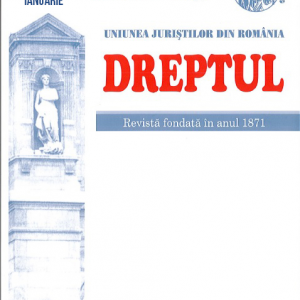 This paper enumerates and analyses the main sources of the Romanian fiscal law.
This paper enumerates and analyses the main sources of the Romanian fiscal law. -
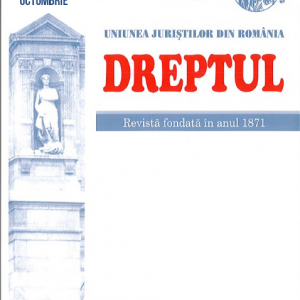 The theme of this study concerns the distinction between the source of fiscal obligations (chargeable event of the tax base), on the one hand, and the individualization of these obligations through various fiscal administrative acts, issued for the application of the legal rules of tax law, on the other hand. In this regard, the author considers both the current Fiscal Procedure Code (the Government Ordinance No 92/2003, in force until 31 December 2015) and the new Fiscal Procedure Code (the Law No 207/2015), which expressly repeals the current Fiscal Procedure Code and shall enter into force on 1 January 2016. The author’s conclusion is that the source of the fiscal obligations is not the law itself, but the legal act, licit or illicit, which gives rise to the fiscal obligatory relation under the terms provided by law and materialized in the individual acts of application of law.
The theme of this study concerns the distinction between the source of fiscal obligations (chargeable event of the tax base), on the one hand, and the individualization of these obligations through various fiscal administrative acts, issued for the application of the legal rules of tax law, on the other hand. In this regard, the author considers both the current Fiscal Procedure Code (the Government Ordinance No 92/2003, in force until 31 December 2015) and the new Fiscal Procedure Code (the Law No 207/2015), which expressly repeals the current Fiscal Procedure Code and shall enter into force on 1 January 2016. The author’s conclusion is that the source of the fiscal obligations is not the law itself, but the legal act, licit or illicit, which gives rise to the fiscal obligatory relation under the terms provided by law and materialized in the individual acts of application of law.
